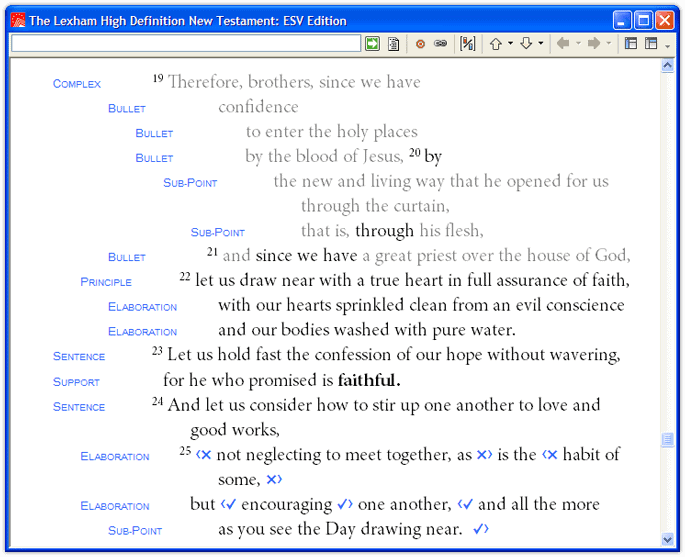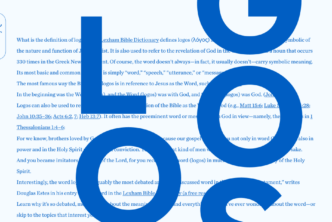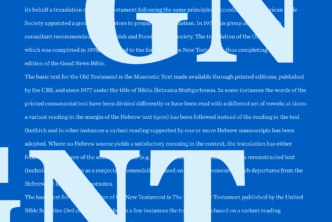Today’s guest post is from Dr. Steve Runge, a scholar-in-residence at Logos Bible Software and author of the Lexham Discourse Greek New Testament, Lexham High Definition New Testament, and the forthcoming Discourse Grammar of the Greek New Testament: A Practical Introduction to Discourse Features for Teaching and Exegesis.
Haddon Robinson is known for what has been called “Big Idea Preaching” based on the importance he places on preaching the central concept of a passage instead of merely the supporting ideas. The key to preaching the big idea is finding the big idea. He cites a really great example from Hebrews 10:19-25. Below is the text in the ESV.
19 Therefore, brothers, since we have confidence to enter the holy places by the blood of Jesus, 20 by the new and living way that he opened for us through the curtain, that is, through his flesh, 21 and since we have a great priest over the house of God, 22 let us draw near with a true heart in full assurance of faith, with our hearts sprinkled clean from an evil conscience and our bodies washed with pure water. 23 Let us hold fast the confession of our hope without wavering, for he who promised is faithful. 24 And let us consider how to stir up one another to love and good works, 25 not neglecting to meet together, as is the habit of some, but encouraging one another, and all the more as you see the Day drawing near.
There are a whole gaggle of ideas in this passage. It can be tricky to unpack it properly.
One of the primary goals of the Lexham Discourse Greek New Testament and the Lexham High Definition New Testament is to help guide you through the process of digesting the grammar and structure of a passage. In the case of Hebrews 10, vv. 19-21 play the role of setting the state for the big idea that is given in v. 22. When passages get as complex as this, it is a real challenge to successfully find your way through to the big idea.
Now take a look at the same passage in the HDNT:
The “Complex” label on the left tells you that you are headed into a passage that has a lot happening. The “Principle” line is the main idea of the complex sentence, indicated by being indented only one level. All of the other supporting elements like the bullets, sub-points and elaboration are indented at least two places. The labels also help you understand what each of these parts is doing. The grayed text indicates backgrounding, information that helps to set the stage for the main idea, but is backgrounded to make sure the main idea is not missed.
If you are looking for some great resources for preaching, I would encourage you to look at a the Baker Preaching Collection, which is currently on Pre-Pub. If you want to learn more about discourse and its practical application to the New Testament, check out my forthcoming Discourse Grammar of the Greek New Testament. It provides all the background you have wanted to know about the Lexham Discourse Greek New Testament and the HDNT.





